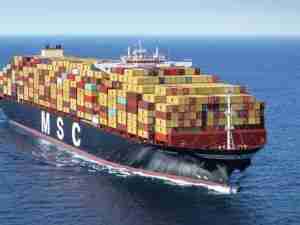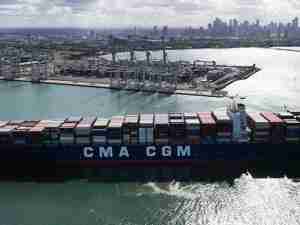Key insights:
1. Air and ocean volumes out of Shanghai continue to be impacted by the drop in manufacturing and available trucking. When possible, exports are being diverted to nearby Ningbo where ocean volumes have increased 14% since the lockdown and congestion has increased.
2. Though some carriers are skipping Shanghai or canceling services, most ships continue to arrive. With Shanghai-bound imports and empty containers in place, some expect the eventual reopening to have less of an impact in terms of delays, congestion and increased rates than previous closures.
3. Strong demand – including a pull forward of peak season shipments – has likely kept transpacific rates about level since Lunar New Year (LNY) and through the slowdown.
a. Meanwhile, Asia-Europe rates have fallen 27% since LNY and 20% since mid-March to their lowest level in nearly a year, likely a combination of seasonality, the drop in available exports, and inflation’s impact on European consumer demand.
Asia-US rates:
• Asia-US West Coast prices (FBX01 Daily) were level at $15,552/FEU. This rate is 162% higher than the same time last year.
• Asia-US East Coast prices (FBX03 Daily) were also unchanged at $17,148/FEU, and are 176% higher than rates for this week last year.
Analysis
As the lockdown in Shanghai stretches on – and restrictions increase in Beijing and elsewhere – the availability of exports continues to be a major factor impacting trade flows. Though authorities are trying to jumpstart production, manufacturing continues to drag. And with the city’s trucking capacity down an estimated 45% it is difficult to get imported materials from the ports to the factories or available shipments from factories to ports.
These factors have led to an estimated 20-30% drop in export volumes out of Shanghai since the lockdown began and a two-day wait for arriving vessels – up from 12 hours before the lockdown, but below the 3+ day wait during peak season last year. Many shippers are diverting exports to Ningbo where export volumes have increased 14% and congestion has worsened.
Though some carriers are omitting Shanghai port calls or canceling some upcoming services, with the ports still open most ships continue to arrive. Together with the decrease in available exports, this trend is one factor in the decrease in ocean rates since the lockdown: transpacific rates have fallen 5-7% since mid-March, and Asia-Europe rates have dropped almost 20% to $10,836/FEU – their lowest level since June – though prices on both lanes remain extremely elevated compared to pre-pandemic levels.
The period between Lunar New Year (LNY) and peak season is typically slow in ocean freight so seasonality could be a factor contributing to the more dramatic Asia-Europe drop as rates have steadily declined 27% since late January. But rates fell only 12% after LNY last year, which could mean that inflation is impacting European demand as well.
Meanwhile the lack of significant drop in transpacific rates post-LNY (this year and last year) or since the Shanghai outbreak points – despite more initial signs that consumer demand is starting to ebb – to the strength of underlying demand from the US including some pull-forward of peak season volumes.
Expectations are that Shanghai will reopen by mid-May at the earliest. The rebound will cause a surge in ocean volumes that will certainly increase congestion, delays and ocean rates. But some experts are optimistic that the resulting disruptions won’t be as extreme as some we’ve seen in the last two years.
Diverted shipments and empty container shortages were major factors in the extent to which previous lockdowns in China disrupted logistics. But with ports operational throughout and most vessels still making Shanghai port calls, imports needed for manufacturing and empty containers needed for exports will already be in place which could speed the recovery and mitigate some of the knock-on effects.









